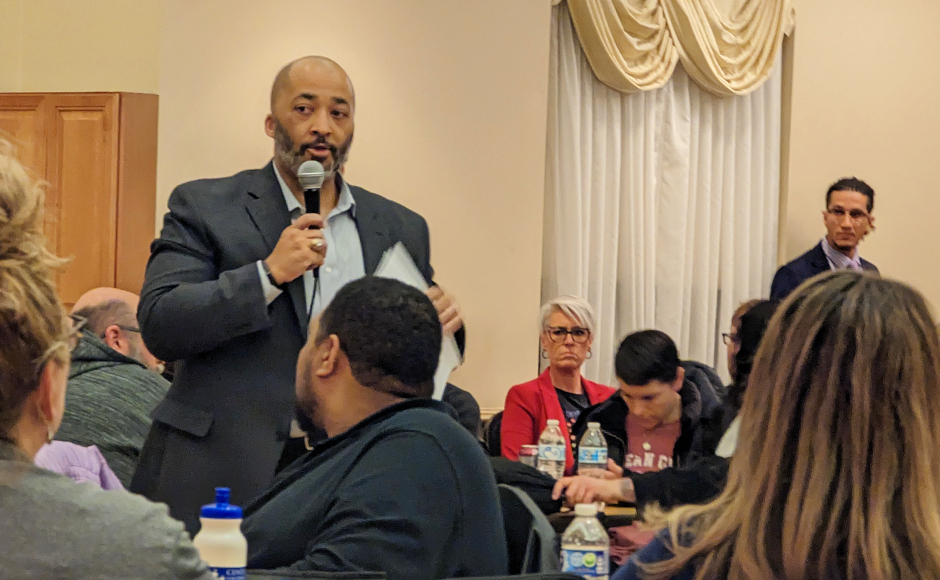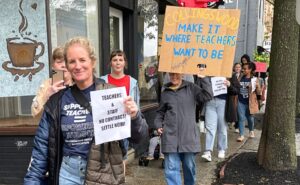 Collingswood Superintendent Fredrick McDowell addresses a community meeting about racial tensions in the district in 2023. Credit: Matt Skoufalos.
Collingswood Superintendent Fredrick McDowell addresses a community meeting about racial tensions in the district in 2023. Credit: Matt Skoufalos. Collingswood Superintendent Fredrick McDowell addresses a community meeting about racial tensions in the district in 2023. Credit: Matt Skoufalos.
Collingswood Superintendent Fredrick McDowell addresses a community meeting about racial tensions in the district in 2023. Credit: Matt Skoufalos.

